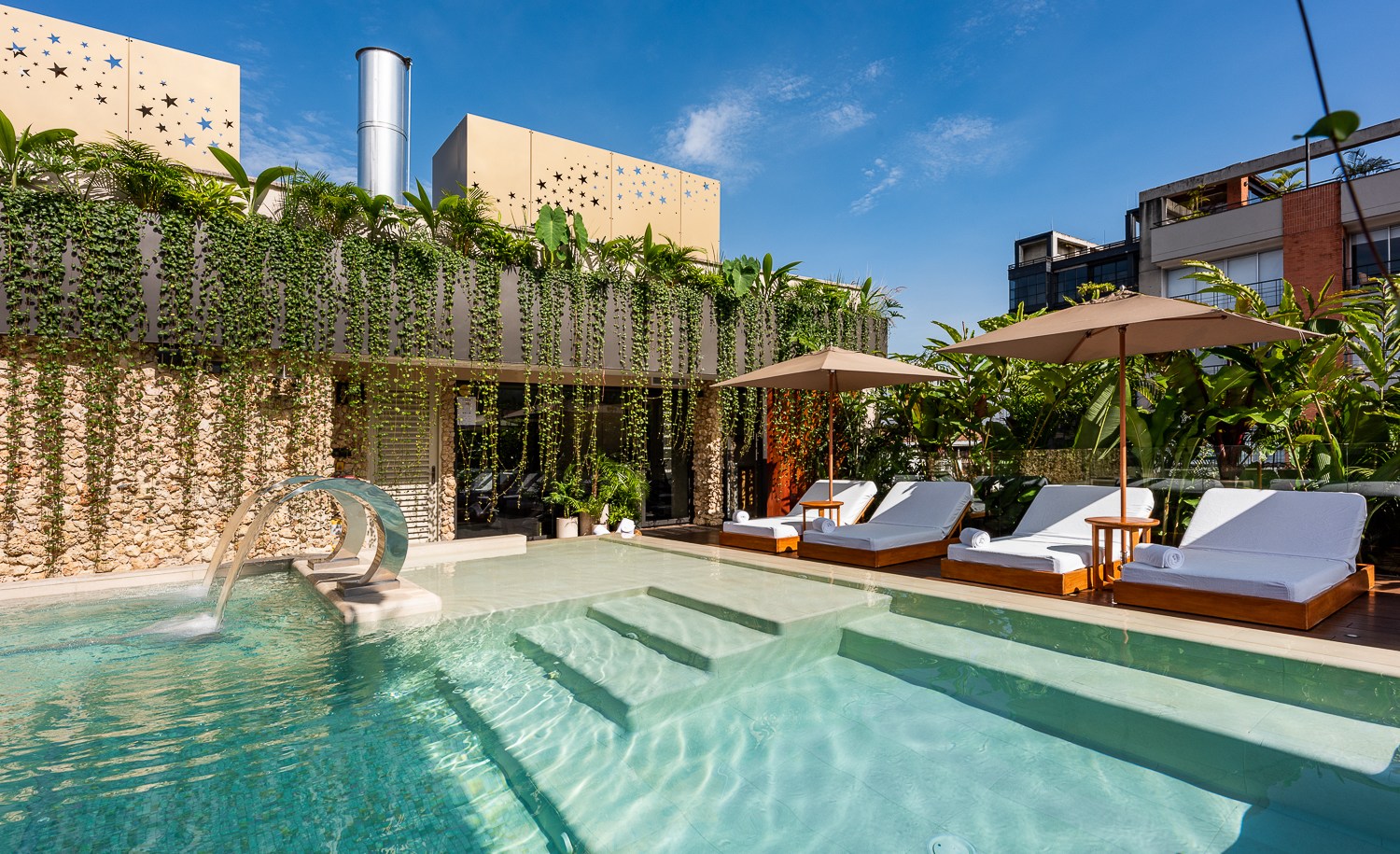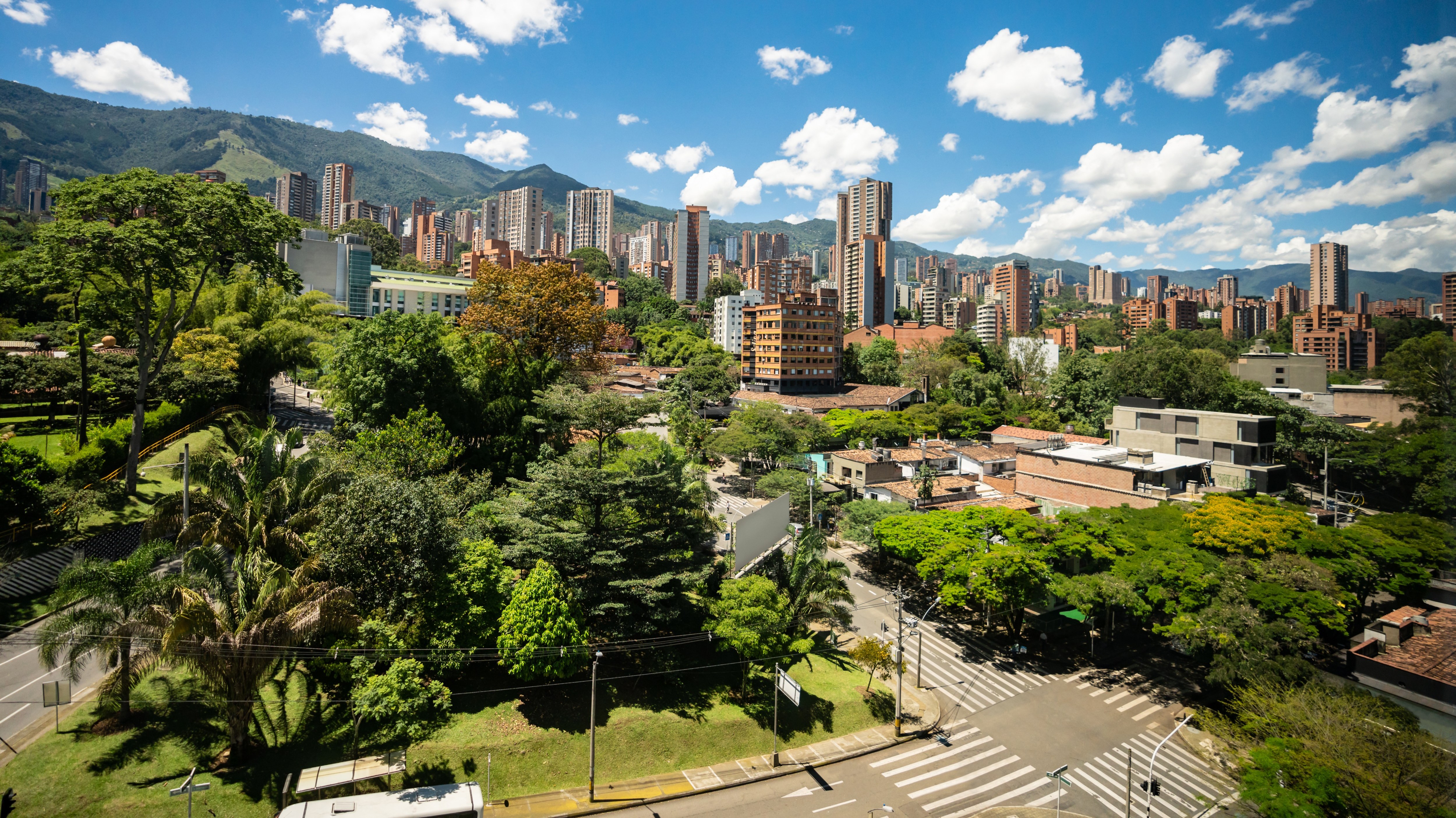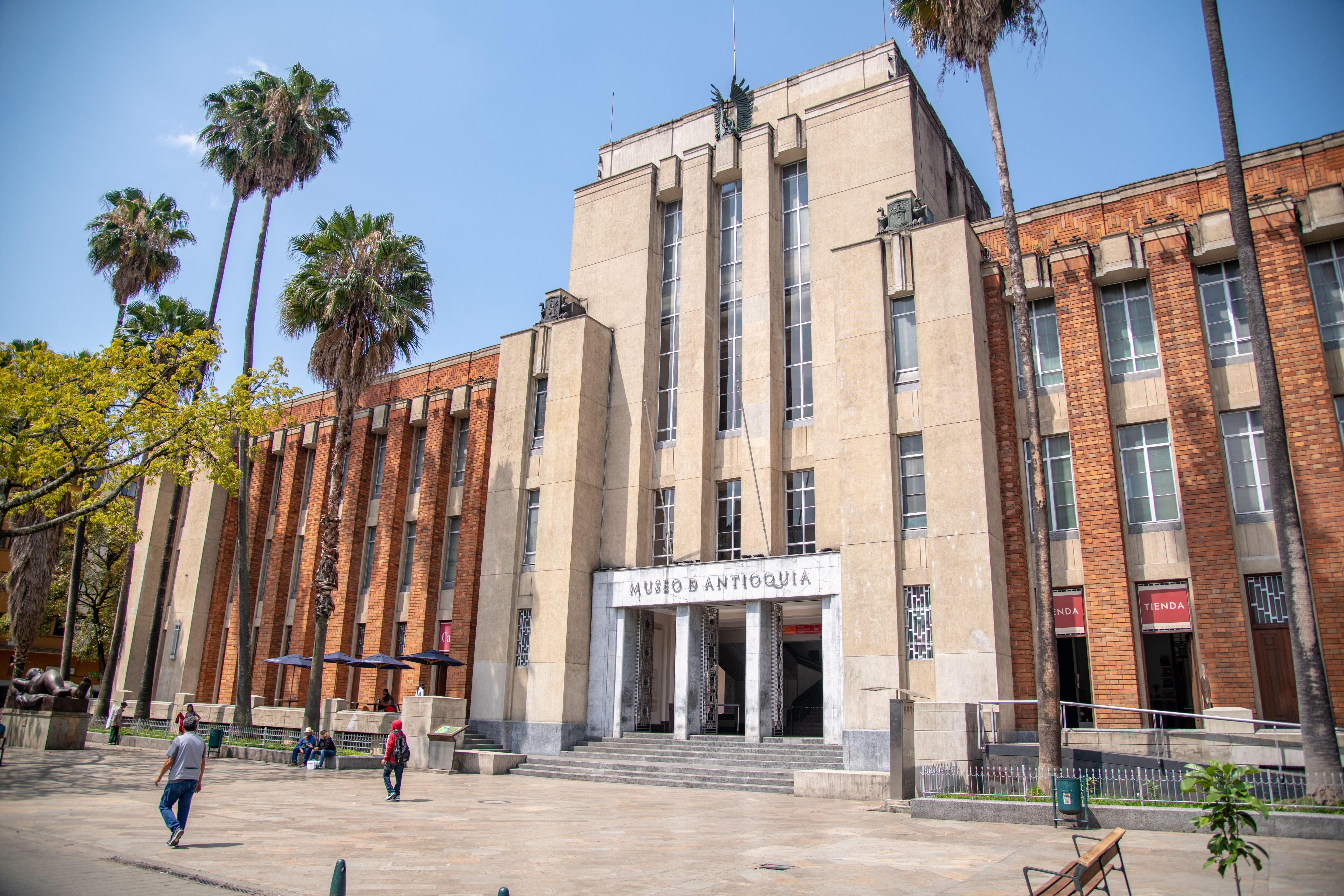The former murder capital of the world is now a vibrant, green city
6 min readIn a café in the Laureles district of Medellin, Jhon Carlos is describing the moment that he first met Pablo Escobar. “I was a teenage criminal; he was the king of cocaine. Therefore he was my god,” he tells me.
Carlos is 50, with eyes as dark as coffee beans. He was raised in Comuna 1, one of the makeshift settlements on the 3,100m-high hills that line Medellin’s Aburra Valley in the Central Andes. The neighbourhood was full of families displaced from the countryside by Farc, the Marxist–Leninist guerrilla group that took on the government from the mid-Sixties until the peace accord of 2016. “There were no schools or healthcare, no transport or police,” Carlos says. “We were ruled by right-wing paramilitary created to fight the leftest guerrillas, gangs and Escobar’s Medellin cartel.” It’s hard to believe that this mild-mannered man began his career at the age of 13 as a gun mule.
Now a teacher, he gives talks to visitors about the city’s past. That Medellin was the world’s murder capital in the Nineties is a distant memory. The gateway city to the cocaine-hungry US market, it was the epicentre of Ronald Reagan’s “war on drugs”. In 2022 the homicide rate here was 97 per cent lower than in 1993. “TV shows obsessed with ‘narco culture’ have perpetuated the city’s old image,” Carlos says. Netflix’s Griselda, about the Medellin-raised, Miami-based drug baroness Griselda Blanco, is just one of the latest. “But Medellin has been transformed.”
Carlos’s story of redemption could be a metaphor for the rehabilitation of Medellin, Colombia’s second and most dynamic city and the capital of Antioquia, one of the country’s 32 departments. Nicknamed “Meda York”, the industrial city with a perennial spring-like climate is known for its urban culture, entrepreneurialism, scientific research, and textile, music and fashion industries. Every July it hosts the Colombiamoda fashion show.

The El Cielo hotel was launched by the chef Juan Manuel Barrientos
URIBE FOTOGRAFIA
It has 40 museums and 21 public parks; very good coffee — the medium-roasted variety grown in Antioquia — restaurants showcasing the ingredients of the world’s most biodiverse nation per square mile; and reggaeton. The Grammy award-winning artists J Balvin and Karol G are from Medellin. In 2023 Laureles was named by Time Out magazine as the world’s coolest neighbourhood for its leafy boulevards of 1940s modernist blocks, inspired by Le Corbusier’s garden city concept. In 2016 the city added another 30 “green corridors” with 170 acres of tree-filled space, cycle lanes and vertical forests to help cut pollution.
Advertisement
As a result of all this, Medellin has made it on to travel wish lists. Last year 1.2 million tourists came, most staying in Poblado, a smart district with 1960s architecture, dynamic restaurants, lightbulb-strung bars and streets so lined with palms and mango trees it feels as if you’re in a jungle.
Tourism now keeps Comuna 13 afloat, people coming to marvel at its social transformation. This formerly troubled hillside neighbourhood was revolutionised by the building in 2011 of a series of escalators that reach the height of a 28-storey building and link it (free of charge) to the city. The same is true of Moravia, once the city’s landfill and now a public garden and home to the Moravia Cultural Centre.

Medellin is home to 21 public parks
GETTY
Today the largely Afro-Colombian neighbourhood of refugees from the Pacific coast is more like a perpetual street culture festival; a life-affirming explosion of loud rhythms, primary colours and self-expression where, for example, Amazon sponsors street murals and Nike films promos. “We’re a bubble of Pacific culture in Medellin,” says Paola Andrea Rivas, 42, a beaming woman in a turban and a flame-orange kaftan who runs Las Berracas de la 13, a restaurant and women’s collective that empowers victims of domestic abuse (mains from £7; @berracasdela13). She brings out plates of coconutty seafood rice on banana leaves while a man in a sequin suit sings Mexican ballads. Music is a healing force here. The Medellin megastar Juanes, the winner of 26 Latin Grammys, puts on concerts and tours to fund Casa Kolacho, a hip-hop school. “If it wasn’t for hip-hop, I’d have gone after the people who killed my family,” says the 40-year-old guide and rapper Catalina Guttieres, aka La Chimbita, who bares a tattoo of each of her dead kin on all four limbs.
In the 2004 documentary La Sierra, filmed in the eponymous hillside neighbourhood across the valley, children as young as four swore retribution for the deaths of their parents at the hands of the paramilitary gang Bloque Metro. “Now kids say that when they grow up, they want to learn about coffee instead,” says Rosilvia Eusse, 43, whose father was the first to plant the beans on the emerald slopes behind the breeze block houses, now accessible by cable car. His coffee caught the attention of the connoisseurs Cristian Raigosa and Joan Molina, and they founded Rituales (ritualescafe.co), a café in Laureles supplied by more than 35 family farms from La Sierra, which can be visited on Urban Coffee tours (from £30; urbancoffeetour.com).
It’s part of the new coffee culture — previously all quality beans were exported — along with a culinary movement with a positive social footprint. La Mamba Negra (@mambanegra.22) in Poblado is one example. Behind the illuminated circular bar, the co-founder and award-winning mixologist Juan David Zapata experiments with unusual Amazonian ingredients: his rattlesnake cocktail made with Glenlivet 12 includes a reduction of citrussy lulo fruit and tonka bean. Brought up in Comuna 13, Zapata now teaches children from his barrio at the Learning for Life social programme, which he also attended as a teen.

The Museo de Antioquia houses many satirical painting by Fernando Botero
ALAMY
Nearby, the Medellin chef Juan Manuel Barrientos launched his first design hotel, the sleek El Cielo with its rooftop pool and jungly feel, in 2021 (B&B doubles from £200; elcielohotel.com). It’s an extension of his Michelin-starred restaurant with satellites in Bogota, Miami and Washington. Nicknamed Juanma, he is known for employing rehabilitated guerrillas and paramilitary.
Advertisement
The artist Fernando Botero’s dream that his home city be known for something other than Escobar might have finally come true. In 2004 the internationally renowned Paisa artist donated 23 of his exaggeratedly voluptuous nudes to the city. The bronzes now stand around like a strange assortment of bodybuilders in Botero Plaza, the highlight of a still gritty downtown where stalls sell street food and fake Nikes. The adjacent Museum of Antioquia houses his satirical paintings as well as the murals of Pedro Gomez, a contemporary of Diego Rivera, and works by the surrealist Alejandro Obregón and the pop artist Beatriz González. But Botero also never wanted us to forget. In 1995, when his giant bronze bird Pajaro was disembowelled in a bomb blast in San Antonio, the sculptor donated a second bird on condition that the deconstructed one remain: a reminder that from destruction arises a different kind of beauty.
Stephanie Rafanelli was a guest of Abercrombie & Kent, which has ten nights’ B&B on its Classic Colombia trip from £6,950pp, including flights, transfers and private guiding (abercrombiekent.co.uk)
Become a subscriber and, along with unlimited digital access to The Times and The Sunday Times, you can enjoy a collection of travel offers and competitions curated by our trusted travel partners, especially for Times+ members
Sign up for our Times Travel newsletter and follow us on Instagram and X

